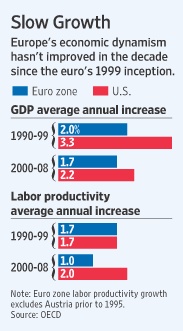Wozniak tells the story of how he offered to develop the PC within HP, but HP turned him down. The story seems highly compatible with the account of disruptive innovations given by Clayton Christensen.
Another aspect of the story is worth highlighting. Sometimes it is alleged, as e.g., with the Tucker auto story, that large incumbent corporations suppress innovations. But in this case, although HP did not want to develop the PC themselves, they did not try to keep Wozniak and Jobs from developing it on their own.
(p. 175) Before the partnership agreement was even inked, I realized something and told Steve. Because I worked at HP, I told him, everything I’d designed during the term of my employment contract belonged to HP.
Whether that upset Steve or not, I couldn’t tell. But it didn’t matter to me if he was upset about it. I believed it was my duty to tell HP about what I had designed while working for them. That was the right thing and the ethical thing. Plus, I really loved that company and I really did believe this was a product they should do. I knew that a guy named Miles Judd, three levels above me in the company structure, had managed an engineering group at an HP division in Colorado Springs that had developed a desktop computer.
It wasn’t like ours at all–it was aimed at scientists and engineers and it was really expensive–but it was programmable in BASIC.
I told my boss, Pete Dickinson, that I had designed an inexpensive desktop computer that could sell for under $800 and could run BASIC. He agreed to set up a meeting so I could talk Miles.
(p. 176) I remember going into the big conference room to meet Pete, his boss, Ed Heinsen, and Ed’s boss, Miles. I made my presentation and showed them my design.
“Okay,” Miles said after thinking about it for a couple of minutes. “There’s a problem you’ll have when you say you have output to a TV. What happens if it doesn’t look right on every TV? I mean, is it an RCA TV a Sears TV or an HP product that’s at fault?”
HP keeps a close eye on quality control, he told me. If HP couldn’t control what TV the customer was using, how could it make sure the customer had a good experience? More to the point, the division didn’t have the people or money to do a project like mine. So he turned it down.
I was disappointed, but I left it at that. Now I was free to enter into the Apple partnership with Steve and Ron. I kept my job, but after that I was officially moonlighting. Everybody I worked with knew about the computer board we were going to sell.
Over the next few months, Miles would keep coming up to me. He knew about BASIC-programmable computers because of his division out in Colorado, and even though they didn’t want my design, he said he was intrigued by the idea of having a machine so cheap that anyone could own one and program it. He kept telling me he’d been losing sleep ever since he heard the idea.
But looking back, I see he was right. How could HP do it? It couldn’t. This was nowhere near a complete and finished scientific engineer’s product. Everybody saw that smaller, cheaper computers were going to be a coming thing, but HP couldn’t justify it as a product. Not yet. Even if they had agreed, I see now that HP would’ve done it wrong anyway. I mean, when they finally did it in 1979, they did it wrong. That machine went nowhere.
Source:
Wozniak, Steve, and Gina Smith. iWoz: Computer Geek to Cult Icon: How I Invented the Personal Computer, Co-Founded Apple, and Had Fun Doing It. New York: W. W. Norton & Co., 2006.
The main Christensen book is:
Christensen, Clayton M., and Michael E. Raynor. The Innovator’s Solution: Creating and Sustaining Successful Growth. Boston, MA: Harvard Business School Press, 2003.






